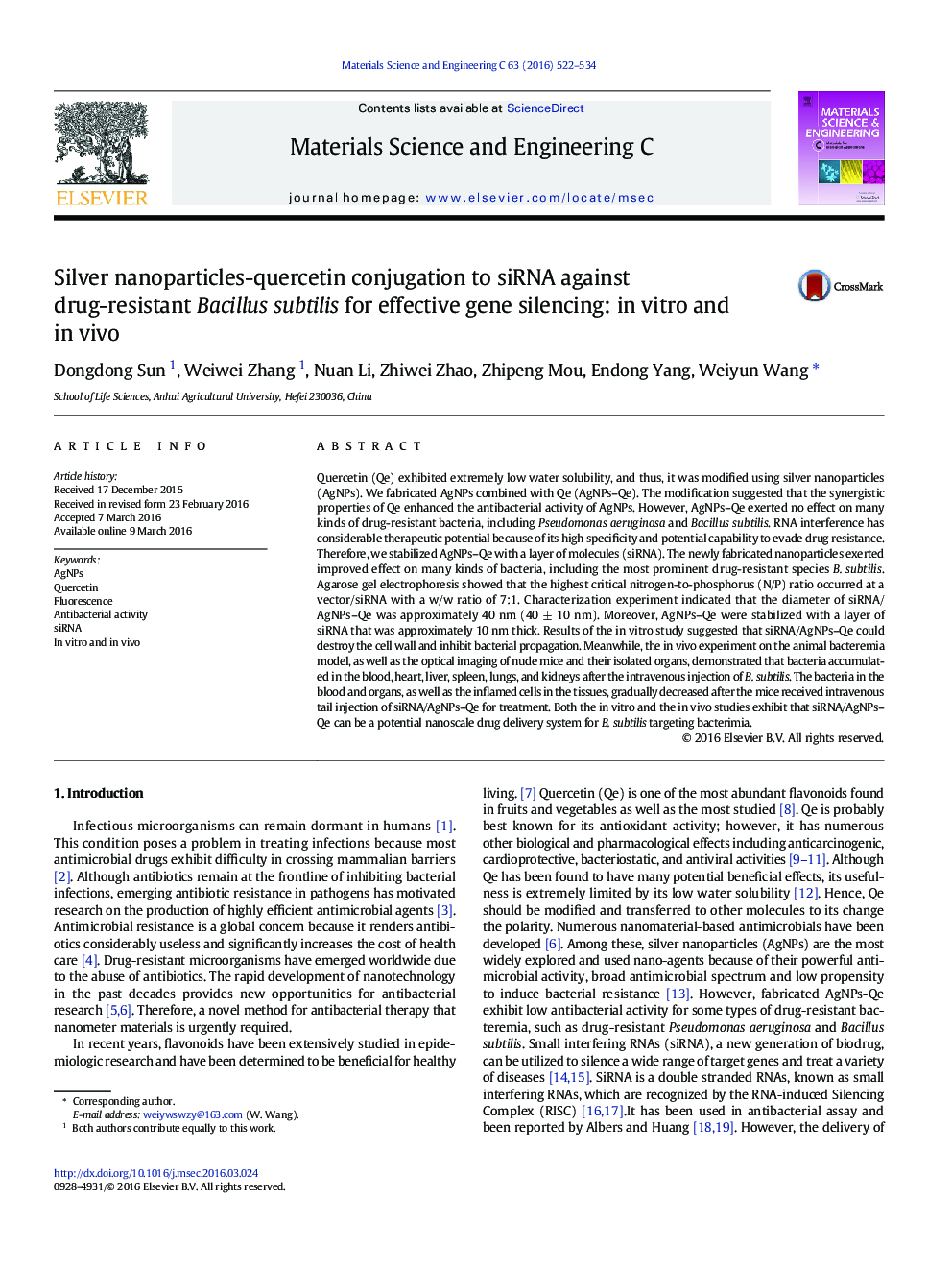| کد مقاله | کد نشریه | سال انتشار | مقاله انگلیسی | نسخه تمام متن |
|---|---|---|---|---|
| 1428045 | 1509158 | 2016 | 13 صفحه PDF | دانلود رایگان |

• Extreme low water solubility of Quercetin (Qe) is changed into water-soluble material.
• The new nanoparticle (NP) has fluorescence properties.
• The new NP is a potential nanoscaled drug for infectious microorganisms by drug-resistant Bacillus subtilis.
Quercetin (Qe) exhibited extremely low water solubility, and thus, it was modified using silver nanoparticles (AgNPs). We fabricated AgNPs combined with Qe (AgNPs–Qe). The modification suggested that the synergistic properties of Qe enhanced the antibacterial activity of AgNPs. However, AgNPs–Qe exerted no effect on many kinds of drug-resistant bacteria, including Pseudomonas aeruginosa and Bacillus subtilis. RNA interference has considerable therapeutic potential because of its high specificity and potential capability to evade drug resistance. Therefore, we stabilized AgNPs–Qe with a layer of molecules (siRNA). The newly fabricated nanoparticles exerted improved effect on many kinds of bacteria, including the most prominent drug-resistant species B. subtilis. Agarose gel electrophoresis showed that the highest critical nitrogen-to-phosphorus (N/P) ratio occurred at a vector/siRNA with a w/w ratio of 7:1. Characterization experiment indicated that the diameter of siRNA/AgNPs–Qe was approximately 40 nm (40 ± 10 nm). Moreover, AgNPs–Qe were stabilized with a layer of siRNA that was approximately 10 nm thick. Results of the in vitro study suggested that siRNA/AgNPs–Qe could destroy the cell wall and inhibit bacterial propagation. Meanwhile, the in vivo experiment on the animal bacteremia model, as well as the optical imaging of nude mice and their isolated organs, demonstrated that bacteria accumulated in the blood, heart, liver, spleen, lungs, and kidneys after the intravenous injection of B. subtilis. The bacteria in the blood and organs, as well as the inflamed cells in the tissues, gradually decreased after the mice received intravenous tail injection of siRNA/AgNPs–Qe for treatment. Both the in vitro and the in vivo studies exhibit that siRNA/AgNPs–Qe can be a potential nanoscale drug delivery system for B. subtilis targeting bacterimia.
The rout of the study. The assembly steps for nanopartical (siRNA/AgNPs-Qe). The vitro study of siRNA/AgNPs-Qe for the drug-resistant B. subtilis. The SEM, AFM and TEM experiments were partly of antibacterial mechanism of siRNA/AgNPs-Qe for B. subtilis. The animal bacteraemia model in vivo study used intravenous tail injection.Figure optionsDownload as PowerPoint slide
Journal: Materials Science and Engineering: C - Volume 63, 1 June 2016, Pages 522–534